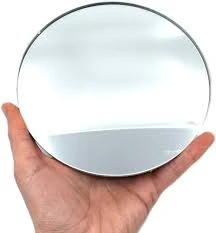

Understanding Silver Front Surface Mirrors A Comprehensive Overview
Silver front surface mirrors are vital optical components widely utilized in various fields, including scientific research, photography, and high-precision instrumentation. Known for their exceptional reflective properties, these mirrors offer a unique combination of aesthetics and functionality that makes them an essential choice for many applications.
What Are Silver Front Surface Mirrors?
Front surface mirrors differ significantly from conventional mirrors, which often have a reflective layer placed behind a glass substrate. In contrast, silver front surface mirrors possess a reflective silver coating applied directly to the front surface of the glass. This design minimizes distortions and aberrations caused by reflections off the glass, ensuring a higher quality image.
Reflective Properties
The reflective performance of silver mirrors is one of their standout features. Silver has the highest reflectivity of all metals in the visible spectrum, achieving reflectivity values of over 95%. This property allows these mirrors to efficiently reflect light across a broad range of wavelengths, making them ideal for applications in spectroscopy, laser systems, and various optical instruments where high precision is crucial.
Advantages of Front Surface Mirrors
1. Minimized Distortion Since the reflective layer is on the front surface, there is no glass layer between the light source and the silver coating. This arrangement eliminates phase shifts and distortion that commonly occur in traditional mirrors.

3. Durability and Longevity While silver can tarnish over time due to oxidation, front surface mirrors can be treated with protective coatings to enhance their durability and maintain reflectivity. These coatings help resist environmental factors, ensuring that the mirrors retain their optical quality for extended periods.
4. Versatile Applications The high reflectivity and clarity make silver front surface mirrors suitable for various applications, including laser optics, projectors, optical sensors, and even decorative purposes in architecture and design.
Considerations When Using Silver Front Surface Mirrors
Despite their advantages, there are several considerations to keep in mind when utilizing silver front surface mirrors
- Tarnishing As mentioned, silver is prone to tarnishing, which can degrade its reflective properties. Regular maintenance and the application of protective coatings can help mitigate this issue.
- Cost Silver mirrors tend to be more expensive than standard glass or aluminum-coated mirrors. However, the investment is often justified by the superior optical performance and durability they provide.
- Handling and Installation These mirrors require careful handling to prevent scratches and damage to the reflective surface. Proper installation techniques should also be observed to maintain performance.
Conclusion
In summary, silver front surface mirrors are remarkable optical devices that provide exceptional reflective quality and resolution. Their unique construction minimizes distortions, making them a preferred choice in demanding applications where precision is paramount. As we continue to make advancements in optical technologies, the importance of such mirrors cannot be overstated. By investing in high-quality silver front surface mirrors, professionals across various industries can ensure optimal performance and enhance the effectiveness of their optical systems. Whether in scientific research, industrial applications, or artistic endeavors, these mirrors stand out for their unparalleled capabilities and versatility.